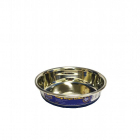
Our feline companions require an ample supply of water to maintain their health, just like their human caretakers. However, it can sometimes be a challenge to make sure they're drinking enough. This guide will help you understand how to encourage your cat to drink more water, ensuring their optimal hydration.
Table of Contents:
- Methods to Encourage Your Cat to Drink More Water
- Determining Your Cat's Daily Water Requirements
- How to Monitor Your Cat's Water Intake
- Understanding Why Your Cat Might Not Be Drinking
- Signs of Dehydration in Cats
Methods to Encourage Your Cat to Drink More Water: A Step-by-Step Guide
1. Regular Cleaning of the Water Bowl
To encourage your cat to drink, it's crucial to offer fresh water in a clean bowl. Even if the water looks clear, if it's not fresh, your cat will notice! Try cleaning your cat's dish daily and, if you have a water fountain, aim for a weekly clean.
2. Introduce a Water Fountain
Many cats are attracted to running water. By providing a bowl with a fountain or stream feature, you may be able to increase your cat's water consumption. During the transition to a fountain, it's advisable to keep a traditional bowl available until they get accustomed to the new source.
3. Multiple Water Bowls
In multi-cat households, it's wise to provide each cat with their own water dish to avoid territorial disputes.
4. Optimal Placement of the Water Dish
Choosing the right location for the water dish is crucial. A quiet, safe location that's not too close to the litter box is optimal. If you live in a larger home, consider placing water dishes in multiple locations for easier access.
5. Include Wet Food in Their Diet
Adding wet food to your cat's diet is another way to increase their water intake. Also, consider checking the moisture content of different dry food brands. Always consult with your vet before making significant changes to your cat's diet.
6. Consult a Veterinarian
If you notice a decrease in your cat's water consumption, it could indicate distress. Always consult with your vet if you notice any sudden changes in their drinking habits.
Determining Your Cat's Daily Water Requirements
The guideline for cat hydration is roughly 1 ounce of water per pound of body weight per day. However, certain factors like hot temperatures, increased activity, medical conditions, or certain medications may increase their daily water intake.
How to Monitor Your Cat's Water Intake
While it may be challenging to quantify your cat's water consumption precisely, you can employ some strategies to estimate their intake:
- Observe the water level in your cat's dish.
- Note how often your cat visits their dish.
- Consider using a smart water dish that can send updates to your smartphone.
Understanding Why Your Cat Might Not Be Drinking
Cats can be very particular about their drinking habits. Here are some reasons they might be avoiding the water bowl:
- Unpalatable water or dirty dish
- A preference for running water
- The dish is in an undesirable location
- The dish is uncomfortable to drink from
- Limited access to water
- Illness
If your cat's water intake does not increase despite trying these strategies, consult your vet.
Signs of Dehydration in Cats
Keep an eye out for these signs of dehydration:
- Decreased energy levels
- Constipation
- Dry or sticky gums
- Sunken eyes
- Reduced appetite
- Loss of skin elasticity
If your cat is showing signs of dehydration, contact your vet immediately. They can provide professional guidance and treatment.
In summary, increasing your cat's water intake can sometimes be as simple as changing their water dish, modifying the dish's location, or cleaning it more frequently. If these steps don't help, or you're concerned about your cat's health, seek advice from your veterinarian. They are best equipped to diagnose and solve any hydration-related issues, ensuring your cat stays healthy and well-hydrated.
